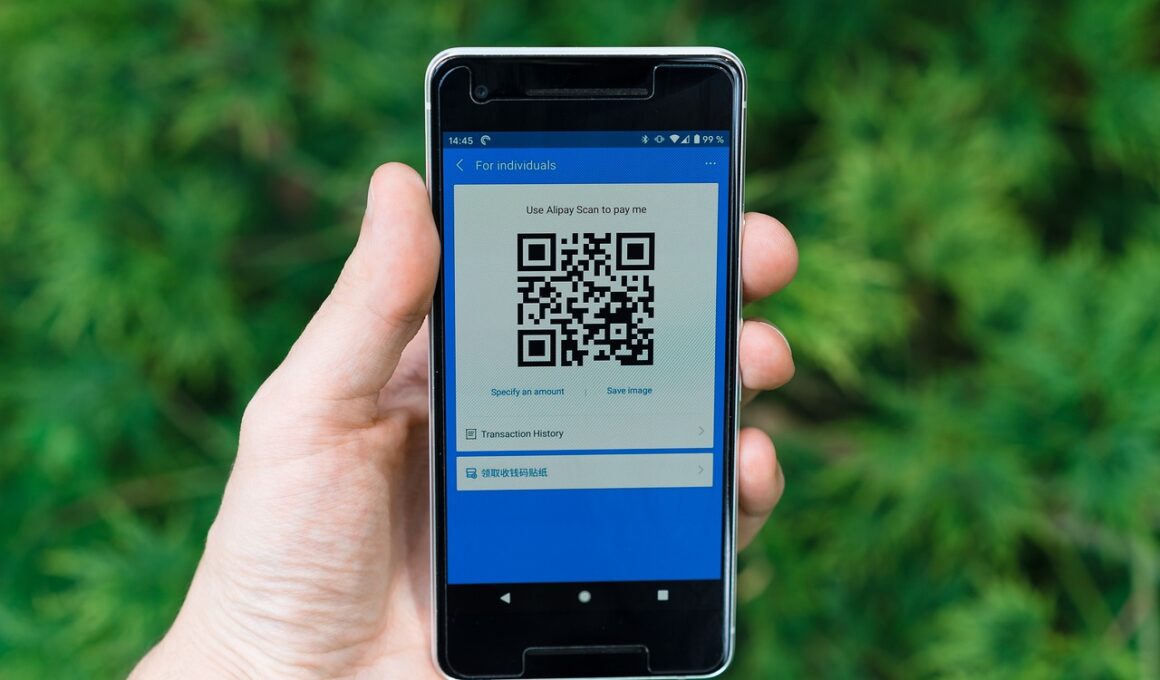How Digital Payment Platforms Facilitate Cross-Border Transactions
In today’s globalized economy, the necessity for seamless financial transactions across borders is evident. Digital payment platforms have emerged as pivotal players in this realm, allowing individuals and businesses to engage in international trade smoothly. These platforms provide advanced functionalities like currency conversion, fraud detection, and real-time tracking of payments, vastly expanding their usability. Not only do they eliminate the hassle of dealing with varying banking regulations, but they also significantly speed up transaction times. Furthermore, they cater to needs by accommodating multiple currencies and international banking systems while ensuring a user-friendly interface. Security remains a top priority in these transactions, as data encryption technologies protect sensitive information. Empowered by digital wallets, users have the flexibility to pay with just a few taps on their mobile devices. To facilitate these advancements, many payment platforms are forging partnerships with local banks to enhance trust and reliability. Overall, shifting toward digital solutions enables businesses to align with modern consumer expectations, leading to enhanced growth opportunities across potential markets.
Digital payment platforms also offer a variety of payment methods to suit various global users. From credit cards to direct bank transfers, these platforms provide choices that can ease international transactions. Popular services like PayPal, Stripe, and TransferWise have continuously improved to support a growing number of currencies. This versatility allows customers to choose the most convenient payment modality for their needs. Moreover, competitive transaction rates make these platforms attractive for businesses engaging in cross-border transactions. Transparency in fees is another significant advantage, as users are often aware of the costs involved upfront, minimizing unexpected expenses. The level of integration digital platforms maintain with e-commerce solutions fosters a seamless shopping experience. Integrations with shopping carts and invoicing functionalities further enhance operational efficiency. With increased mobile penetration, these platforms have also optimized their applications for smartphones, enabling users to transact anytime, anywhere. These advanced tools ensure users facilitate transactions quickly and safely from the comfort of their homes, which remains a significant factor in modern commerce, driving the continued global e-commerce expansion.
Impact on Small Businesses
Digital payment platforms are particularly transformative for small businesses looking to grow internationally. Traditional banking systems often impose high barriers for small enterprises, such as lengthy paperwork and high transaction fees. Digital payment platforms remove these barriers, empowering small businesses with tools that facilitate entry into global markets, reaching customers that were once inaccessible. They can now sell their products and services internationally via websites and online marketplaces. The ability to implement these platforms means SMEs can compete alongside larger corporations, bolstering the economy. Additionally, digital payments encourage the development of innovative business models, including subscription services and digital goods. Furthermore, payment platforms offer analytics that can provide valuable insights about customer behavior and financial performance. Such data can guide marketing strategies, optimize inventory, and improve customer retention efforts. E-commerce growth is notably attributed to the accessibility and convenience these payment solutions offer to consumers. As small businesses integrate digital payment methods into their strategies, they witness enhanced revenue streams and accelerated growth trajectories that improve their market competitiveness in society.
As cross-border transactions grow, compliance with international regulations becomes increasingly critical. Digital payment platforms typically embed compliance measures within their systems to navigate the complex landscape of international financial regulations. They implement anti-money laundering (AML) processes to ensure that transactions adhere to the law, which helps protect businesses and consumers alike. This proactive approach to compliance fosters trust among users in maintaining their financial integrity, as security becomes a top concern in digital transactions. Additionally, these platforms often collaborate with regulatory bodies to ensure they remain updated with changing standards. User identification processes, like Know Your Customer (KYC), provide another layer of security. Initiating these measures can considerably diminish fraudulent activities, ultimately enhancing the platform’s reputation. Education about compliance and security further empowers users to make informed decisions. By actively promoting best practices in digital transactions, platforms foster an environment of safety and trust. As international trade continues to flourish, these compliance functions become indispensable, strengthening the foundations upon which cross-border commerce operates effectively.
Future Trends in Digital Payments
The future of digital payments is shaping up to be more dynamic and innovative than ever. With cutting-edge technologies like blockchain and artificial intelligence, the payment landscape is poised to change significantly. Blockchain technology, specifically, offers transparent and secure transactions that can eliminate intermediaries, creating direct peer-to-peer transactions worldwide. This disruption also leads to reduced fees and more efficient processes that benefit users. Furthermore, AI integration in payment platforms enhances fraud detection, providing real-time analysis that can adapt to emerging threats. As consumer expectations evolve, personalization in payment experiences will become paramount. Users will increasingly expect tailored solutions that reflect their previous interactions. Additionally, the rise of cryptocurrencies will alter traditional payment methods, driving platforms to adopt multi-currency support that includes digital currencies. With the ongoing emphasis on mobile usage, payment solutions designed for mobile wallets will further gain prominence. Contactless payments are also gaining traction, particularly in light of the ongoing health concerns leading more users toward contactless transaction methods. Overall, the convergence of these trends promises a transformative future for digital payment platforms, reshaping international business activities.
To encapsulate these advancements, it is essential to examine the growing importance of user experience in digital payment platforms. As more providers emerge and competition intensifies, the need for user-friendly interfaces becomes increasingly clear. Platforms focusing on seamless navigation, quick processing, and responsive customer support will lead the market. Educational resources, such as tutorials and FAQs, will further facilitate user understanding and navigation of payment services. Payment platforms may also leverage social proof by showcasing user reviews and success stories, building additional trust and credibility. Furthermore, the role of customer feedback cannot be overstated; platforms must continuously solicit feedback to evolve and adapt their services based on real user experiences. New payment features must incorporate user suggestions as they represent a vital component in creating an aligned service offering. Enhanced engagement initiatives can also increase user retention, as satisfied customers are more likely to return. In summary, the focus on user experience and engagement sets the foundation for heightened success in payment platforms, establishing them as leaders in facilitating cross-border transactions.
Conclusion
The influence of digital payment platforms in facilitating cross-border transactions is undeniably significant. They have revolutionized the way businesses and consumers interact, fostering a global marketplace where geographical barriers are diminished. By increasing accessibility, offering efficiency, and ensuring security, these platforms empower users to conduct transactions with confidence. The array of choices available caters to different user preferences and needs, enhancing transaction experiences for all types of users. As trends in technology continue to advance, the evolution of these platforms promises a future where cross-border transactions are even more accessible, affordable, and secure. The ongoing collaboration between payment providers and regulatory bodies will ensure that safety measures keep pace with innovation, further promoting trust in digital payments. The anticipated surge in e-commerce will only escalate the demand for these services. As small businesses leverage digital payment solutions, they will thrive in the evolving landscape of international trade. Ultimately, digital payment platforms are set to play a crucial role in shaping the global economy as they continue to evolve, driven by technology, user preferences, and market trends.
This article highlights the critical role that digital payment platforms play in facilitating seamless cross-border transactions. As globalization enhances interconnectivity, the implications of secure, efficient payment systems can’t be overstated. This dynamic interplay not only fosters commerce but also enhances consumer confidence in financial transactions worldwide. The rapid technological advancements and user-centric approaches will undoubtedly yield a transformative future for payment solutions, thereby reshaping global commerce for businesses and consumers alike.


